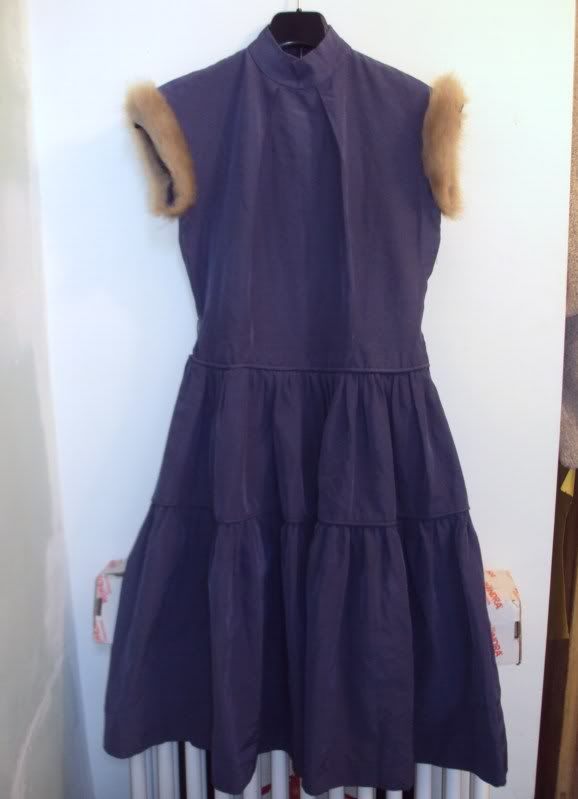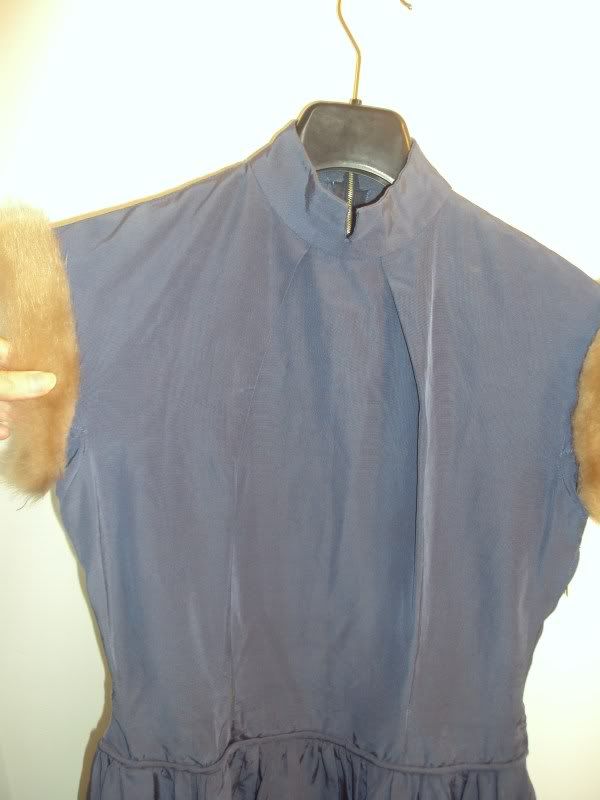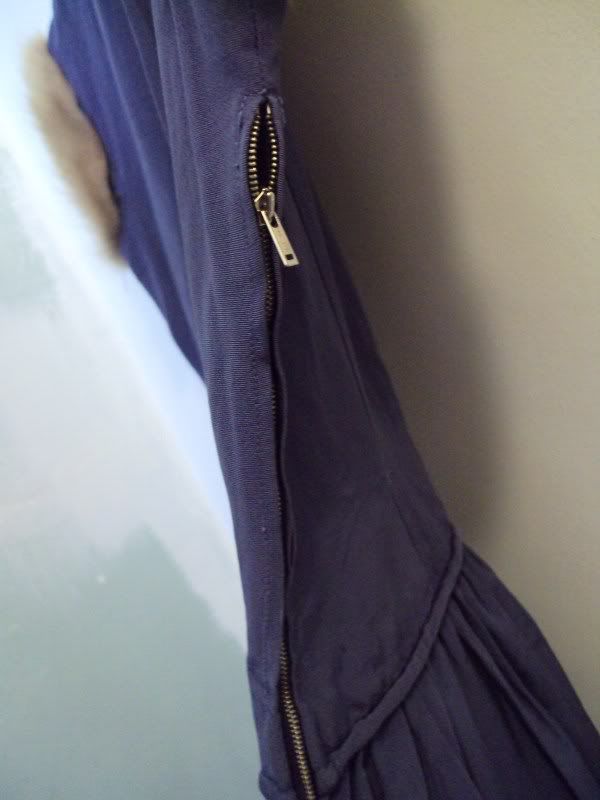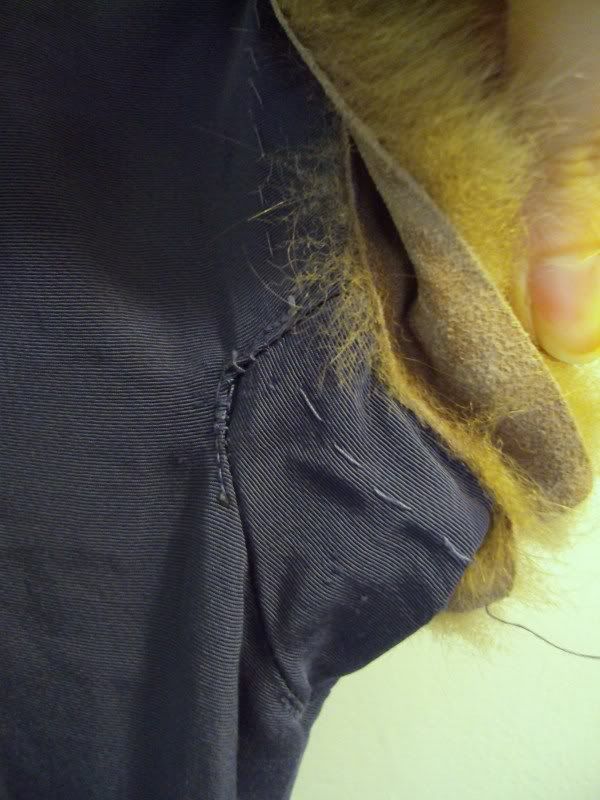Vmode
Registered Guest
I bought this dress listed as '50s but it has an earlier feel to me.. no labels aside from a little cotton sizer, and 30s-40s looking metal zippers- at the side and a shorter one to the back neck.
The fabric is a kind of faille, with tiered skirt (is that the right term- I'm unsure whether 'tiered' just applies to layers) and slight drop waist.
Two diagonal pleats from the neck, and sleeves trimmed in real fur.. the original sleeves have been cut off, turned in and then had the fur added. I wonder what the sleeves would likely have been? .. and why on earth anyone thought to replace them in this way!
The fur itself has a fairly long pile, it looks like mink until you see the skin backing which is quite tough- I don't know whether that's just with age.




If anyone can advise that would be great, it's such an odd little thing!
Ava
The fabric is a kind of faille, with tiered skirt (is that the right term- I'm unsure whether 'tiered' just applies to layers) and slight drop waist.
Two diagonal pleats from the neck, and sleeves trimmed in real fur.. the original sleeves have been cut off, turned in and then had the fur added. I wonder what the sleeves would likely have been? .. and why on earth anyone thought to replace them in this way!
The fur itself has a fairly long pile, it looks like mink until you see the skin backing which is quite tough- I don't know whether that's just with age.




If anyone can advise that would be great, it's such an odd little thing!
Ava